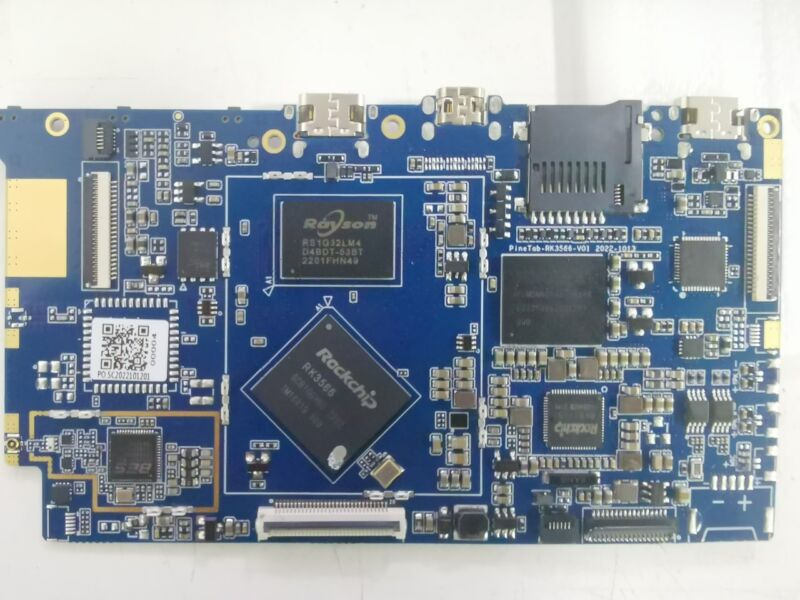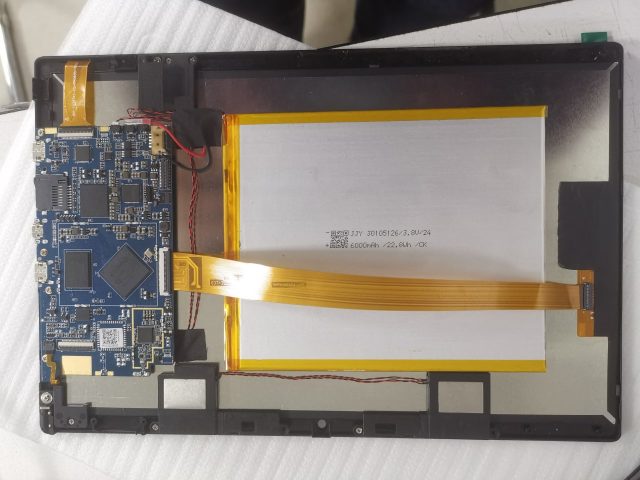PineTab 2 is another try at a Linux-based tablet, without the 2020 supply crunch

Enlarge / PCB for the prototype PineTab 2, a successor to a tablet that hit production at the worst possible point in 2020. (credit: Pine64)
Pine64, makers of ARM-based, tinker-friendly gadgets, is making the PineTab 2, a sequel to its Linux-powered tablet that mostly got swallowed up by the pandemic and its dire global manufacturing shortages.
The PineTab 2, as described in Pine64's "December Update," is based around the RK3566, made by RockChip. Pine64 based its Quartz64 single-board system on the system-on-a-chip (SoC), and has all but gushed about it across several blog posts. It's "a dream-of-a-SoC," writes Community Director Lukasz Erecinski, a "modern mid-range quad-core Cortex-A55 processor that integrates a Mali-G52 MP2 GPU. And it should be ideal for space-constrained devices: it runs cool, has a variety of I/O options, solid price-to-performance ratio, and "is genuinely future-proof." While Linux support was scarce early on, development for RK3566 is "booming," and it's now a prime candidate for mobile operating systems, Erecinski writes.

The PineTab 2 is a complete redesign, Erecinski claims. It has a metal chassis that "is very sturdy while also being easy to disassemble for upgrades, maintenance, and repair." The tablet comes apart with snap-in tabs, and Pine64 will offer replacement parts. The insides are modular, too, with the eMMC storage, camera, daughter-board, battery, and keyboard connector all removable "in under 5 minutes." The 10.1-inch IPS display, with "modern and reasonably thin bezels," should also be replaceable, albeit with more work.